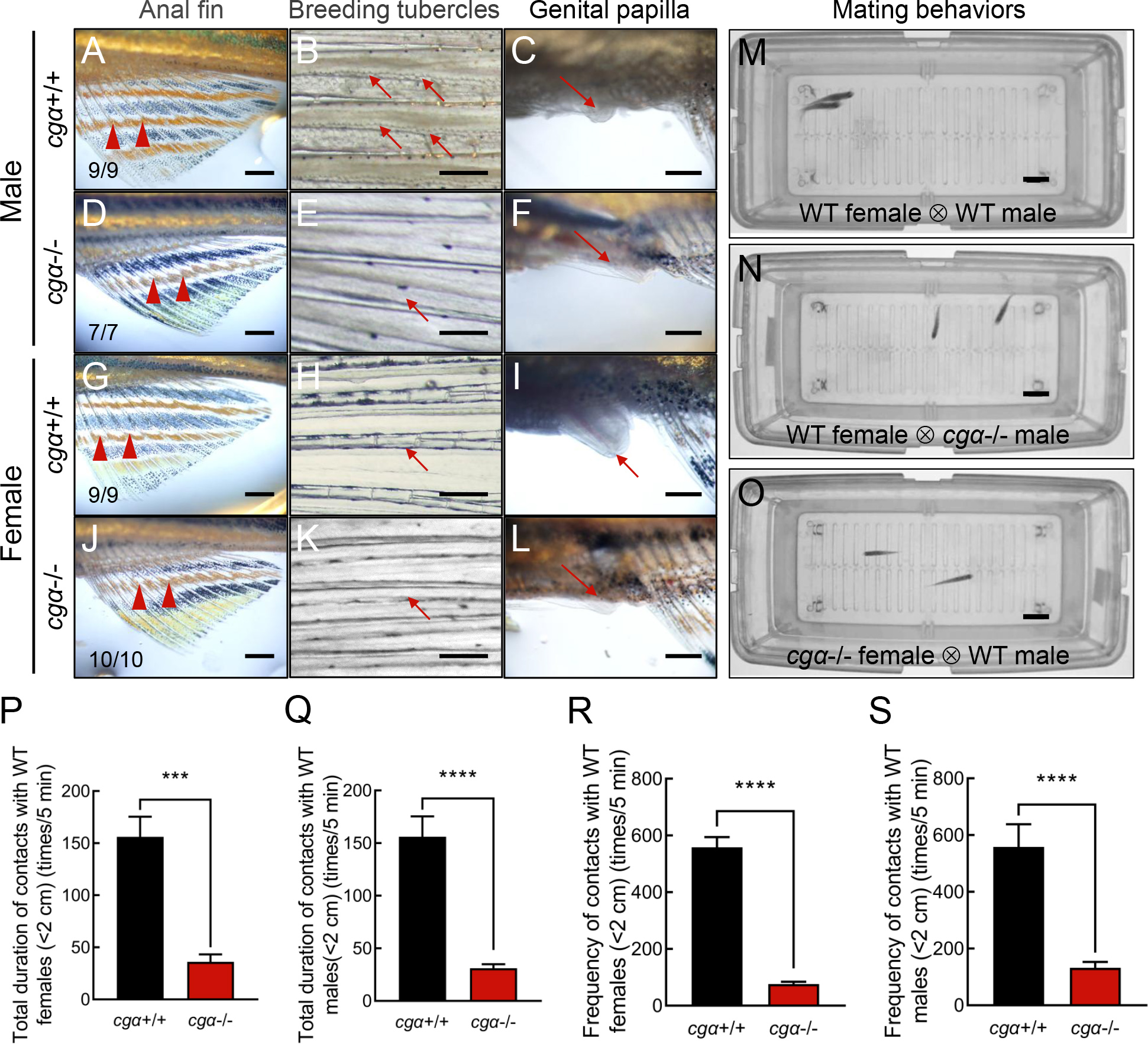Fig. 3 Disrupted male-typical SSCs and impaired mating behaviors in cgα-deficient zebrafish A, D, G, J: Anal fin coloration in control male (A), cgα-deficient male (D), control female (G), and cgα-deficient female (J). Black arrowheads indicate male-typical bright yellow characteristic of control males, red arrowheads indicate dark yellow characteristic of control females and both sexes of cgα-deficient fish at 4 mpf. B, E, H, K: Presence of pectoral fin BTs. Black arrows indicate pectoral fin BTs in control males (B), red arrows indicate absence of pectoral fin BTs in control females (E) and both sexes of cgα-deficient fish (H, K) at 4 mpf. C, F, I, L: Formation of genital papilla. Red arrow indicates female-typical genital papilla in control females (I), black arrows indicate absence of genital papilla in control males (C) and both sexes of cgα-deficient fish (F, L) at 4 mpf. Scale bars: 2 mm. M–O: Representative mating behavior sequences monitored using the ZebraTower system. Parallel swimming, grasping, and spawning were observed between WT males and females (M), while only transient encounters or avoidance were seen in pairing of cgα-deficient and WT fish of the opposite sex (N, O). Scale bars: 2 cm. P–S: Quantification of duration (P, tested with WT female; Q, tested with WT male) and frequency (R, tested with WT female; S, tested with WT male) of intimate contacts over 5 min (<2 cm). WT, wild-type. ***: P<0.001; ****: P<0.0001.
Image
Figure Caption
Acknowledgments
This image is the copyrighted work of the attributed author or publisher, and
ZFIN has permission only to display this image to its users.
Additional permissions should be obtained from the applicable author or publisher of the image.
Full text @ Zool Res

